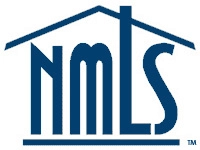Do I Need Homeowners Insurance?
Are you a first time buyer looking for a home and have tons of questions? Or maybe you already found the home of your dreams but you’re not sure what to do next? Wherever you are in the home buying process, one thing people often forget about when budgeting for their home is the cost of homeowners insurance. This will most likely be the biggest purchase you make in your life, so you’re going to want to make sure you keep the home and the property inside well protected.
Although there are many different things to think about when it comes to your homeowners insurance policy, the one thing that will make a major difference is the method for valuation, which determines what you receive in case of a disaster. There are three methods of valuation and they will each be discussed below.
Market Value
The market value of a home is based on the price it would obtain in the open market. When considering this method of valuation, it may seem like a fair way to get the value of the home, but it does not consider the cost of rebuilding. Market value will usually include the cost of the land and could result in higher payout and higher monthly premiums as well.
If the value of the property depreciates a significant amount, the money you would receive after a disaster may not be enough to cover the cost of rebuilding leaving you to pay the difference out of pocket.
Replacement Cost
The next option you have for valuation is replacement cost which is the amount of money it would take to acquire the materials needed and labor to repair the house to its previous condition. In most homeowners’ policies there is a limit regarding how much one can receive in the case of a disaster. In some cases, you can receive a percentage above that amount if you have an extended replacement cost as part of the policy. These policies help when the market fluctuates and the cost of parts and labor change as well.
Actual Cash Value
The last option when it comes to homeowners having their home valued is actual cash value, which is the replacement cost minus the depreciation of the home prior to the accident. For example, say your roof should have had a sustainable life for 20 years, but was damaged when you had it for 15 years. In the replacement cost policy, you would be compensated for the full value of the roof as long as it didn’t exceed the ceiling of the policy.
In the same scenario, under the actual cash value policy, you would get quite a bit less since the roof was already depreciated by 75 percent. It’s important to consider, actual cash value policies usually don’t have ceilings like replacement cost policies.
Call Us Today!
Buying a home can be quite the tenuous process and we want to help you out in any way possible. Whether you’re just browsing the market or ready to get pre-approved, we are here to help so give the team at North Star Mortgage Network a call today!














